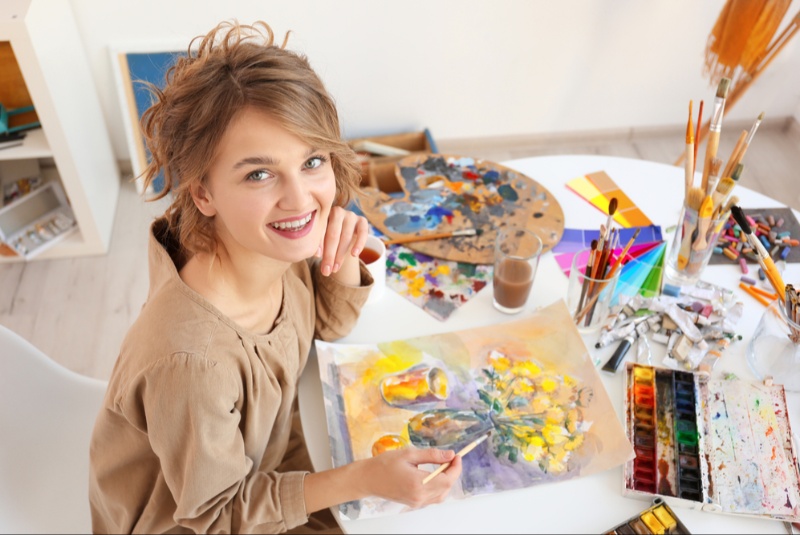From the soft hues of a pastel sunrise to the vibrant shades of a bustling market, the world around us is a vivid tapestry begging to be captured. For those who appreciate the art of painting, watercolor offers a unique and gratifying medium to express creativity. Flexible, portable, and relatively easy to learn, watercolor painting can become a joyful addition to your artistic repertoire. Here's a comprehensive guide to help you explore the universe of watercolor painting.
The Basics: What You Need
The beauty of watercolor is that you don't need much to start. At the bare minimum, you'll require:
- Watercolor paper: Opt for a heavyweight, textured paper designed to hold watercolor paint.
- Paint: Watercolor paint comes in tubes or pans. Beginners often find pans easier to manage.
- Brushes: A range of brushes, from broad to fine tips, will give you more control over your strokes.
- Palette: Any flat surface can serve as a palette, but there are also specialized watercolor palettes available.
- Water and paper towels: Necessary for mixing and cleaning.
Understanding the Techniques
There are numerous techniques in watercolor painting to help you achieve different effects:
- Wet-on-Wet: Apply wet paint onto a wet surface for a soft, blurred look. Ideal for painting skies and water.
- Wet-on-Dry: This involves applying wet paint on a dry surface, resulting in crisp lines and details.
- Dry Brush: Using a dry brush on a dry surface creates a rough texture. It's great for creating texture like bark or gravel.
- Glazing: Layering one color over another, after the first layer has dried, to create depth or adjust color.
- Graded Wash: Dilute the pigment gradually to create a gradient effect.

Shutterstock
Color Theory
Understanding color theory can significantly elevate your art. Learn the color wheel, which includes primary, secondary, and tertiary colors, and how they interact. The right color combinations can convey a mood or atmosphere. Pay attention to the color temperature (warm vs. cool colors) and how it influences your painting.
The Planning Stage
While some artists thrive on spontaneity, a bit of planning goes a long way, especially if you're a beginner. Sketch your subject lightly with a pencil to establish your composition before applying paint.
The Creative Process
Start by wetting the paper if you are using the wet-on-wet technique. Apply your lighter colors first; watercolor is a transparent medium, so it's difficult to paint lighter colors over darker ones. Build up your layers and add details as you go along. Don't forget to step back and review your work frequently.
Troubleshooting Tips
- If you make a mistake, a damp brush can often lift the color off the paper.
- Use masking fluid to preserve areas of your painting that you want to keep white or light-colored.
- If your paper buckles from the water, use watercolor blocks or stretch your paper beforehand.
The journey of mastering watercolor is one of experimentation, patience, and continuous learning. But don’t let the intricacies intimidate you; even a simple splash of color can be immensely satisfying and therapeutic. Start simple, perhaps with a landscape or a bowl of fruit, and slowly challenge yourself with more complex subjects and techniques. Your world is a canvas, and watercolors offer you an endlessly expressive palette to capture it. So, unleash your creativity and watercolor your world!




